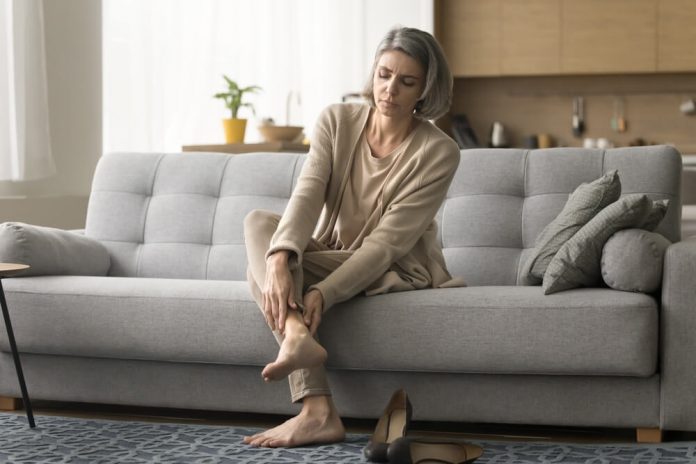As we age, our bodies undergo numerous changes, and one area that often requires extra attention is our feet. Years of walking, standing, and daily wear and tear can lead to issues such as reduced arch support, joint pain, or even conditions like arthritis and diabetes that affect foot health. Choosing the right footwear is not merely a matter of comfort but also a necessity for maintaining mobility, preventing falls, and enhancing overall well-being.
The Importance of Proper Footwear
For senior citizens, the right footwear can make a world of difference. Poorly designed or ill-fitting shoes can contribute to a host of problems, including blisters, calluses, bunions, and even chronic pain. More importantly, inadequate support and slippery soles increase the risk of falls, which can have serious consequences for older individuals.
Comfortable, well-fitted shoes that offer the right support can alleviate pain, improve posture, and enhance stability, ensuring that seniors can continue their daily activities with confidence and ease.
Key Features to Look for in Senior-Friendly Footwear
Selecting the right pair of shoes involves considering several factors that contribute to foot health and mobility. Here are some crucial elements to keep in mind:
- Proper Fit
One of the biggest mistakes seniors make is wearing shoes that don’t fit properly. Feet can change shape over time, so it’s essential to measure them periodically and select shoes that provide ample space for the toes while ensuring a snug fit at the heel.
- Look for shoes with a wide toe box to prevent crowding.
- Avoid shoes that pinch or leave too much space, as both can cause discomfort and instability.
- Adjustable closures, such as Velcro straps, can be particularly useful for achieving a customised fit.
- Support and Cushioning
Good arch support and cushioned soles are key to reducing strain on joints and muscles.
- Choose shoes with contoured insoles that provide arch support, especially for those with flat feet or high arches.
- Shock-absorbing soles help to reduce the impact on knees and hips when walking.
- Orthopaedic insoles or custom inserts can provide additional comfort for individuals with specific foot conditions.
- Non-Slip Soles
Falls are a major concern for senior citizens, making slip-resistant soles a vital feature in footwear.
- Look for shoes with rubber or textured outsoles that provide good traction.
- Avoid shoes with overly smooth soles that may increase the risk of slipping on wet or polished surfaces.
- Low, sturdy heels (if any) are preferable over high heels, which can lead to imbalance.
- Lightweight and Flexible Design
Heavy shoes can be cumbersome and make walking more tiring. Lightweight, flexible materials ensure ease of movement and reduce strain on the legs.
- Opt for breathable materials such as leather or mesh to allow air circulation and prevent excessive sweating.
- Flexible soles allow for natural foot movement while walking.
- Easy to Wear and Remove
Seniors may struggle with bending down to tie laces, so ease of use is an important factor when selecting footwear.
- Slip-on shoes with elastic side panels or Velcro closures are a practical choice.
- Avoid shoes with complicated fastenings that require extensive effort to put on and take off.
Types of Footwear Suitable for Seniors
Depending on lifestyle and specific foot concerns, seniors may require different types of footwear for different occasions.
- Walking Shoes
A good pair of walking shoes is a must for seniors who enjoy outdoor strolls or regular exercise. Look for lightweight, cushioned shoes with good arch support and a non-slip sole.
- Orthopaedic Shoes
For those with medical conditions such as diabetes, arthritis, or bunions, orthopaedic shoes provide extra support, cushioning, and space to accommodate swollen feet or custom insoles.
- Indoor Slippers with Support
Walking barefoot or in flimsy slippers at home can be risky. Supportive indoor footwear with non-slip soles is essential for preventing slips and falls within the house.
- Sandals with Arch Support
For warm weather, sandals with adjustable straps, cushioned soles, and arch support can provide comfort without compromising on stability.
- Winter Boots
In colder climates, seniors should opt for insulated boots with a firm grip to prevent slipping on icy surfaces. Look for easy-to-fasten options with wide openings.
Common Footwear Mistakes to Avoid
- Wearing worn-out shoes: Over time, shoes lose their support and grip. Replace footwear regularly to ensure continued comfort and stability.
- Choosing style over function: While aesthetics matter, comfort and safety should always take precedence over fashion trends.
- Ignoring foot pain: Persistent pain can be a sign of an ill-fitting shoe or an underlying foot problem that requires medical attention.
- Opting for cheap, poorly constructed shoes: Investing in good-quality footwear can significantly improve mobility and overall health.
Choosing the right footwear is a crucial aspect of maintaining comfort, mobility, and safety in one’s later years. Senior citizens should prioritise well-fitted, supportive, and slip-resistant shoes that cater to their specific needs. By making informed choices, they can enjoy a more active and independent lifestyle without the discomfort or risk of injury that comes with unsuitable footwear. After all, happy feet lead to a happier and healthier life!








